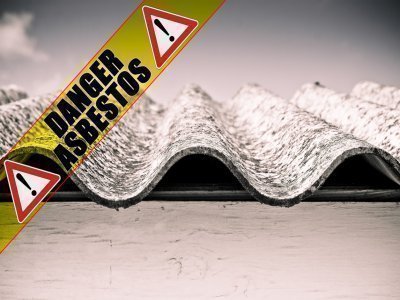Update On Asbestos In Roofing
Due to widespread historic use, asbestos roofing is now a major problem in some commercial buildings. Exposure to the elements over the years means it is more likely to have deteriorated than asbestos used elsewhere. The Asbestos Safety and Eradication Agency has just released a new report that looks at current ways of containing and stabilising asbestos, particularly in roofing. The idea is to make the asbestos safer to remain in place or to help make it safer whilst it’s removed.
The Asbestos Safety and Eradication Agency (ASEA) new report, ‘Review of Asbestos Stabilisation and Containment Practices’ , is by Dr Leela Kempton and Professor Tim McCarthy of the University of Wollongong Sustainable Buildings Research Centre. Following the National Strategic Plan for Asbestos Management and Awareness 2014-2018 outcome (3.2) of “Improved stabilisation and containment practices for ACMs in poor conditions” the report presents the results of a desktop review of asbestos containment and stabilisation practices and products.
The Effect Of Ageing On Asbestos
Weathering, age or disturbance of asbestos cement or other Asbestos Containing Materials (ACM) can increase the shedding of airborne asbestos fibres. JTA has carried out numerous assessments of weathered ACM with the most weathered being roof and external wall sheeting exposed to the elements.
In JTA’s experience, there is often a visible deterioration in the condition of north and west facing asbestos cement and metal sheeting coated with an asbestos/paint compound (Galbestos) compared with those of the same age facing, south and east. Other factors, such as corrosive ventilation exhausts or areas of excessive water run-off can cause local wear and tear.
Weathered asbestos cement and galbestos roofing will release fibre into the air, however it does not appear that it presents an airborne asbestos exposure risk under normal conditions. Fibre in runoff collected in on- site gutters, stormwater drains or soak pits, draining weathered asbestos cement or galbestos roofs may present a risk of accumulation of asbestos fibres and its removal is subject to regulatory control.
How To Increase The Lifetime Of Asbestos In Roofing
Ideally, the ASEA would like to see asbestos removed completely from all buildings. As this is not always practical or economically feasible, they believe methods like encapsulation that potentially expand the useful lifetime of the asbestos are better than doing nothing. Encapsulation is the process of covering a material containing asbestos in a penetrative compound to contain the fibres.
The cost of replacing the roof and shutting down operations during its removal can run to many hundreds of thousands of dollars for a normal industrial or commercial roof. Contrasted with the often much lower cost of sealing the roof, which may extend its life for ten years or more and impart improved waterproofing and thermal insulation, encapsulation looks like an attractive option. However, when considering the stabilisation of an ACM roof it is important to look beyond the selection and application of the sealant.
Other Factors To Consider
Here are a few other factors, learned from JTA’s experience, to consider and plan for:
- First and foremost is sealing the roof the most cost effective option? In JTAs experience full removal of a roof may seem costly however variations in scope and cost during encapsulation works can occur. Elimination of the asbestos should always be considered and may be a reasonably practicable solution particularly for weathered and deteriorating asbestos containing materials.
- Falls from roofs remain a significant risk of fatality and death and asbestos roofs can be brittle. So primarily, it is important to ensure that access to the roof for all the works involved in the encapsulation is safe i.e. fall prevention controls are compliant, effective and enforced.
- Most roofs will require some preparation for optimum results. Preparation is most likely to generate free asbestos fibre and not dealt with in much detail in the ASEA report. Abrasion of ACM is subject to Workplace Health and Safety regulatory prohibitions and other controls and preferred preparation methods may require an assessment by a competent person for compliance. In addition, WHS Environmental and Public Health legislation administered by State Environmental Protection Agency’s, and local government authorities may need to be considered.
- Any roof work will normally involve costs to provide safe access, organise and manage the job so it might make sense to include roof repairs at the same time. Repairing asbestos roofs can be tricky due to the need to manage the asbestos fibre risk and to dovetail non asbestos with asbestos materials. Experience in this specific area will help the job run smoothly.
- Workers in white coveralls spraying an asbestos roof are likely to attract attention. Managing public perceptions and potential interactions with local and state authorities and community groups may be more complex than the job itself. Forward planning and a scientifically based communication strategy with can assist with this.
The bottom line is that asbestos is still a widespread issue. Many companies looking at asbestos removal in buildings, especially roofing, find the cost prohibitive. The ASEA says that while high costs limit complete removal of asbestos there should be support for short-term alternatives such as encapsulation. Will the government provide an incentive or support for stabilisation practices as an interim measure? Time will tell.
1 Review of Asbestos Stabilisation and Containment Practices, The Asbestos Safety and Eradication Agency, 18th May 2017, Dr Leela Kempton, Professor Tim McCarthy, Commonwealth of Australia and University of Wollongong Sustainable Buildings Research Centre.
JTA are experts in asbestos identification, assessment and management.
Learn more about:
Asbestos Audits
Asbestos Air Monitoring
Asbestos Clearance Inspections







